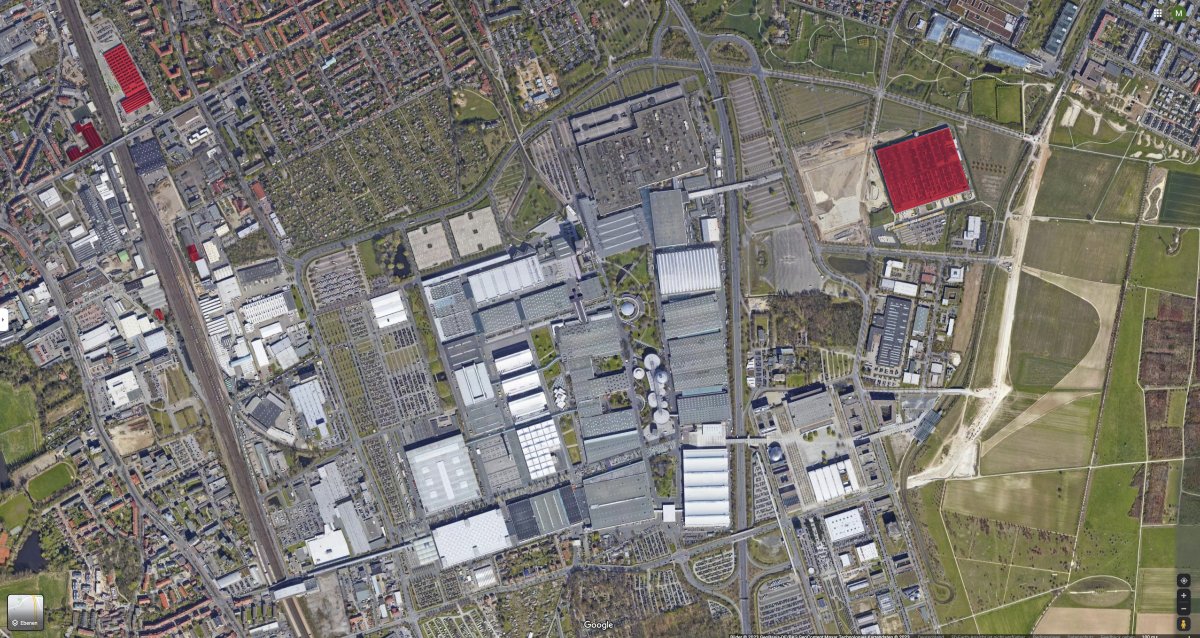Satellite images show hectares of unused flat roofs wherever you look. And that in a country that wants to more than triple its photovoltaic capacity by 2030. Commercial roofs would be the ideal location for solar systems in many respects, as reported by the magazine MIT Technology Review in its current issue 4/2023 (now in well-assorted newsagents). They often offer several thousand square meters of space. This makes the installation significantly cheaper per kilowatt than with small, fragmented private roofs. And unlike open-space systems, no new areas have to be developed.
One problem: “About half of the halls do not have the technical requirements,” says Christian Helbig, Head of Real Estate & Facility Management at the logistics company Hermes Germany. In most cases, the permissible roof load is not sufficient.
Power sources that are cheap to develop are lost
In addition, there is significantly less money for a feed-in than can be saved by self-consumption. For this reason, the systems are largely designed for self-consumption and not for the optimal use of the roof area. “We don’t actually want to feed it in. That doesn’t make sense for us,” says Andreas Maak, Technical Energy Manager at Hermes Germany. From the point of view of the operators, the focus on self-consumption is understandable – but from an economic point of view it is disastrous: Power sources that are relatively easy and cheap to develop are lost.
There are some indications that things are slowly moving, for example with the recent amendment to the Renewable Energy Sources Act (EEG). “With the EEG 2023, some important obstacles for commercial roofs were abolished,” praises the industry association BSW Solar. A study by the industry association BDEW suggests another way of making roof systems more attractive: increasing consumption, for example through charging stations or heat generation.
Artificial intelligence went mainstream almost overnight with ChatGPT. How do we deal with the changes that the big AI models will bring about? That’s what the new issue of MIT Technology Review is all about. Highlights from the magazine:
In practice, those responsible for PV are plagued by a completely different concern: “Network operators, grid operators, grid operators. Nothing works without them, they are the bottleneck,” says Tristan Sieg, PV group leader at Edeka Minden-Hannover. In order for a PV system to be able to be regulated in the event of an imminent overload of the power grid, the grid operators need, among other things, remote access. In addition, all systems above 135 kilowatts require certification by an independent auditor. “There are an infinite number of network operators, and they all want it to be different,” says Sieg. “There is no overarching standard.” Andreas Maak from Hermes Germany confirms: “It’s a horror. We have to fight with every single network operator.”
Numerous hurdles in photovoltaic systems
In concrete terms, it looks something like this, says Maak: “If we build a system according to the DIN standard and the standard has changed in the meantime, we first have to argue with the network operator about what the relevant standard is. Then we need specialist companies for that Certification, first of all you have to find a company with available resources. Then each network operator has its own regulations for remote access. Then you have to find a supplier who has exactly the module that the network operator requires. Then it has to be programmed. Then it has to an appointment with the network operator to check whether everything is in compliance with calibration law. That’s an aria that has been dragging on at one location for two years now.” It was “a mystery” to him how one wanted to create an energy transition with all the regulations.
The Ministry of Economy knows this problem. Now it wants to speed up the connection, among other things through “wide standardization and digitization of processes” and “binding deadlines for the grid connection”. An “industry dialogue” set up by the ministry is now to work out the details.
The Federal Network Agency (BNetzA) should also intervene more according to the will of the BMWI: “Network operators, for example, require certain product brands or device types, although comparable products are available. The BNetzA will continue to check these requirements for abuse in the event of complaints.”
The certification backlog will probably not clear up any time soon. Because while the federal government is still fine-tuning the legal framework, the federal states are relying on tough regulatory policies: Baden-Württemberg, Bavaria, Berlin, Hamburg, Lower Saxony, North Rhine-Westphalia, Rhineland-Palatinate and Schleswig-Holstein already have a photovoltaic obligation for new non- Residential buildings enacted.
Read MIT Technology Review here:

(hrm)
